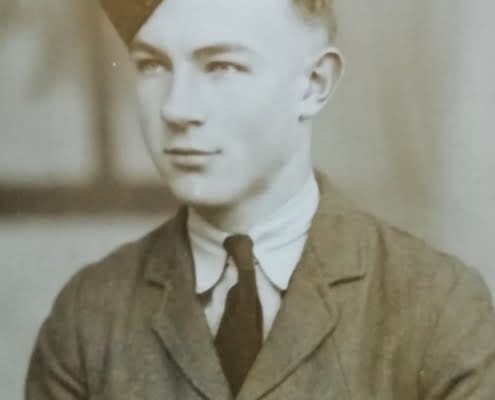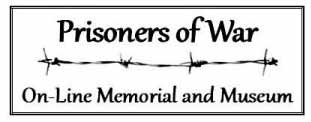
Edward Tomsett ‘s Tafchenbuch (POW) Long March Diary.
Faith, Firsthand Long March Accounts, Liberation and Repatriation, Long Marches, Treatment and WelfareEdward Tomsett was a Gunner in the Royal Artillery. POW Number 221772.
Diary 1945. January to May. Home address 6 Scotholme Avenue, Hyson Green, Nottingham. UK.
Edward Tomsett (back Row 5th From The Right)Judging by the closely…

Hugh Fraser – march after capture and march to freedom
Capture, Firsthand Long March Accounts, Liberation and Repatriation, Long Marches
In Hugh Fraser's account he describes his march immediately after capture and his Lamsdorf Long March experience.
Private Hugh Fraser March After Capture And March Out Of Captivity

John Burton Shanks – wartime experiences
Communication, Education, Firsthand Long March Accounts, In Camp, Liberation and Repatriation, Long Marches, Recreation, Uncategorised, War Diary, WorkIn the introduction to his journal Jenny Kingston wrote:
Much to his parents dismay, my father, John Burton Shanks, lied about his age and signed up to help the war effort when he was 17 years old. At school he had been a member of the OTC…

Frank Emslie’s long march
Firsthand Long March Accounts, Liberation and Repatriation, Long Marches, Treatment and WelfareFrank Emslie recorded the places he passed through on the Lamsdorf Long March in his pay book , January – April 1945. Noting the distance covered - a total of 819Km
His daughter has transcribed the list below.
Lamsdorf (Lambinowicz)
…

Robert John Clucas – Experiences of a Prisoner Of War
Capture, Firsthand Long March Accounts, Liberation and Repatriation, Long Marches, Treatment and Welfare, WorkRobert John Clucas - Experiences of a Prisoner Of War
BY PRIVATE R.J.CLUCAS. POW No 33597
INTERVIEW BY ENID ENGLAND
As edited by M.L.Clucas
The Prologue June 22nd, 1942: In Egypt, 4 and 5 New Zealand Brigade is allocated defense…

Raymond Chanel Dew’s wartime account
Capture, Firsthand Long March Accounts, Long Marches, Treatment and WelfareRaymond Dew, was a prisoner of war at Stalag VIIIB from 1941-1945. He served in the New Zealand Army and was captured by the Germans on 01 June 1941. He kept an account of his experiences.
Raymond Dew's Wartime Account

Howard Holmes – war memoirs
Capture, Firsthand Long March Accounts, In Camp, Liberation and Repatriation, Long Marches, Treatment and Welfare, Uncategorised, WorkHoward Holmes War Memoirs
I was a private in 15th platoon Hawke’s Bay Company which I’d joined in December 1940 when I was 23. After seeing action in Greece and with little in the way of weaponry we were taken off on the “Ajax” and…

Charles (Chaz) John Keslake – diary transcription
Capture, Firsthand Long March Accounts, In Camp, Liberation and Repatriation, Long Marches, Treatment and Welfare, UncategorisedDiary of Charles (Chaz) John Keslake
In this book, I intend to give an account of my life from the time I enlisted in the British Army, during the Second World War, 1939 - 1945, until my discharge.
The contents are entirely for my own…

Archie Crack – the search for a Czech family who helped him
Firsthand Long March Accounts, Long Marches, Post-war experiences, ResearchReport from Canadian Battlefield Tours
In the second world war, an Australian soldier Alwyne (Archie) Crack was a prisoner of the Germans at Lambinowice in Poland. This was a large prisoner-of-war camp Stalag 344 for prisoners of war from Britain,…

Herbie Mills photo book transcription
Communication, Firsthand Long March Accounts, Long MarchesRichard Rimmer, son-in-law of Herbie Mills of the Manx Regiment, Royal Artillery, has transcribed a photo book kept by Mills during his time at Stalag VIIIB/344 Lamsdorf.
The book contains the names and addresses of a number of fellow prisoners,…
